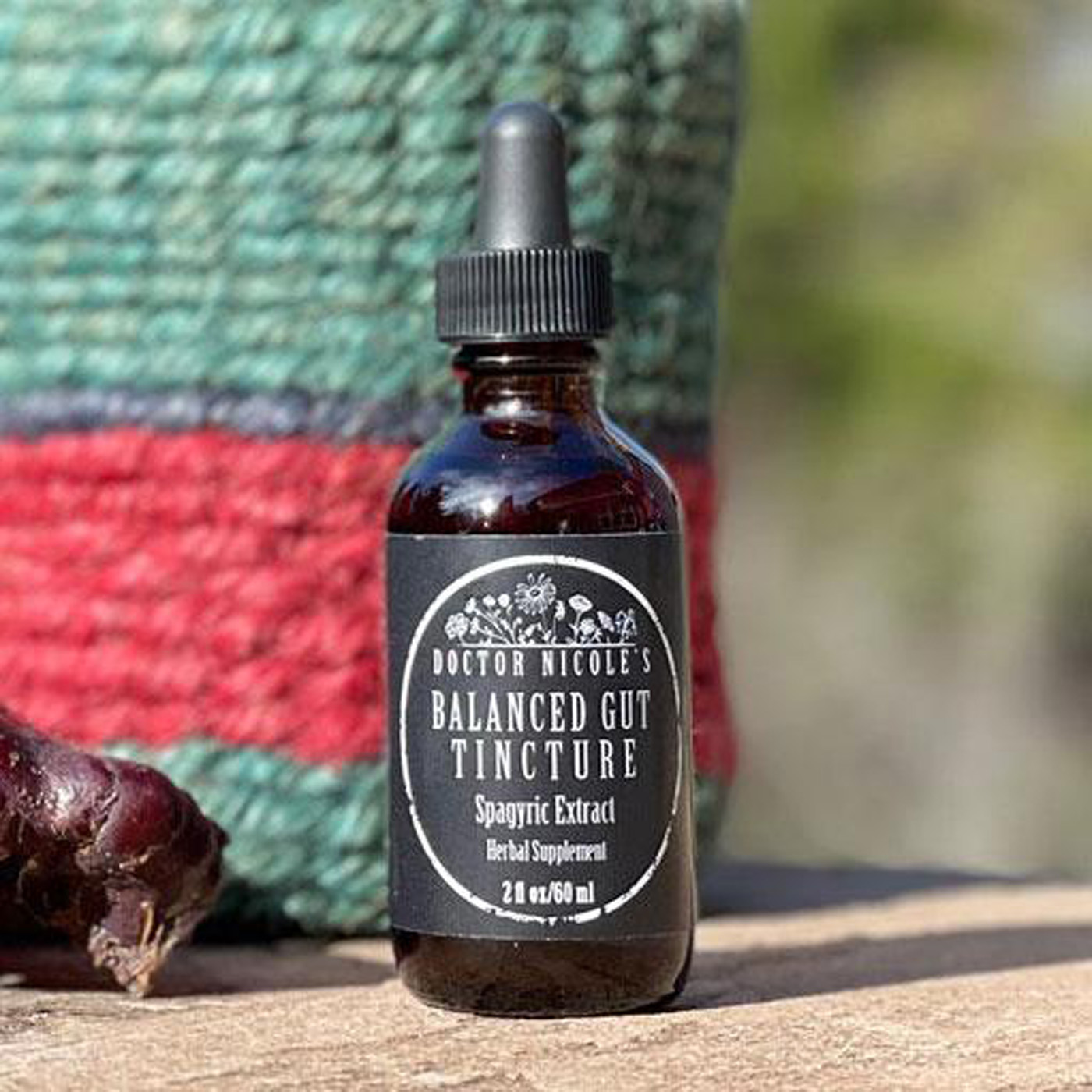Youthful and Healthy Aging
Over the last few years or so, there has been a buzz around Nrf2, which some believe may be a veritable “fountain of youth”. This natural compound found in the cells is closely tied to resistance to oxidative stress and the subsequent aging process — including a reduction in disease, improved energy levels, youthful skin, cognitive health, and much more. In this post, we will dive deep into Nrf2, its function, and how to activate this important chemical signaler through diet and medicinal plants. Let’s begin!
What is Nrf2?
Nuclear factor erythroid 2-related factor 2 (Nrf2) is a protein in your cells that regulates the production of antioxidant proteins and enzymes to help your body resist oxidative stress. It plays a crucial biological role in regulating immunity, inflammation, detoxification, and metabolism. Simply put, it’s closely intertwined with robust health.
When we are younger, we can fight cellular oxidative stress easily because the activation of Nrf2 is effective. However, as we age the process becomes increasingly less efficient, leading to a more rapid breakdown of the body and a slower repair process. This is one of the reasons why as you grow older fatigue, sagging skin, disease, joint pain, and slow exercise recovery are more common. The reduced level of activated Nrf2 also impacts your sleep quality and cognitive health.1
Moreover, studies have shown mood disorders, such as depression, bipolar, and anxiety are linked with dysfunction of the Nrf2 pathway as it causes an uptick in chronic inflammation and poor neurotransmitter function.2,3,4 Autoimmunity is also strongly associated with reduced availability of Nrf2 — including multiple sclerosis, lupus, and rheumatoid arthritis.5,6,7
While consuming more antioxidants through a healthy diet helps to offset some of the oxidative stress encountered in day-to-day life, as we age it isn’t enough. Instead, researchers have found Nrf2 activation in the cells is key as it’s the ‘”master regulator” of the antioxidant response, modulating the expression of hundreds of genes, including not only the familiar antioxidant enzymes, but large numbers of genes that control seemingly disparate processes such as immune and inflammatory responses, tissue remodeling and fibrosis, carcinogenesis and metastasis, and even cognitive dysfunction and addictive behavior.”1
Interestingly, our cells are already primed with plenty of Nrf2. The problem is that as we age, it becomes increasingly difficult for it to become activated and available for use.
Your next question most likely is: How can we activate Nrf2 more fully later in life?
Nrf2-Friendly Foods
Several foods are known to spark Nrf2 activation, including:
- Turmeric
- Blueberries
- Cruciferous vegetables
- Dark leafy greens
- Green and white tea
- Dark chocolate
- Legumes such as lentils, beans, and peas
- Oregano
- Red wine
- Resveratrol (from grapes or Japanese knotweed)
Medicinal mushrooms have also been shown to activate Nrf2.
In one study, cordyceps was found to encourage higher cellular Nrf2 levels that inhibited hypoxia-induced oxidative stress.9 Additionally, research published in the International Journal of Biological Macromolecules established that cordyceps extract improved oxidative stress and the inflammatory response in allergic asthma mice by regulating the Nrf2 signaling pathways, which “may be closely correlated with maintaining the stability of the gut microbiota.”10
If you need an extra level of gut and microbiome support, see our Balanced Gut Blend in the apothecary.
Reishi has also shown promise in activating Nrf2. A study published in Molecular Biology Reports found that this mushroom “has been essential in preventing and treating cancer” by up-regulating cytoprotective genes and eliminating xenobiotics and reactive oxygen via the activation of Nrf2 signaling pathways.11
It’s important to keep in mind that medicinal mushrooms require dual-extraction with both water and alcohol to access the full spectrum of beneficial properties. Additionally, extracts should only utilize the higher-quality fruiting body of the mushroom, rather than the substandard mycelium. Why? Because fruiting body extracts contain 30 to 40 percent beta-glucans, compared to mycelium extracts, which typically only have 5 to 7 percent. These compounds are known to boost and regulate the immune system, improve glucose tolerance, support heart health, and more.
In short, if you are seeking the most potent medicinal mushroom extracts on the market, tinctures that utilize the whole fruiting mushroom body are essential — such as the ones in my apothecary.
Interested in learning more? Visit our Methods Page to discover what sets our tinctures apart!
Nicole Apelian
Nicole’s Apothecary Products in this Post
References
- Hybertson, B. M., Gao, B., Bose, S. K., & McCord, J. M. (2011). Oxidative stress in health and disease: the therapeutic potential of Nrf2 activation. Molecular aspects of medicine, 32(4-6), 234–246. https://doi.org/10.1016/j.mam.2011.10.006
- Bakunina, N., Pariante, C. M., & Zunszain, P. A. (2015). Immune mechanisms linked to depression via oxidative stress and neuroprogression. Immunology, 144(3), 365–373. https://doi.org/10.1111/imm.12443
- Martín-de-Saavedra, M. D., Budni, J., Cunha, M. P., Gómez-Rangel, V., Lorrio, S., Del Barrio, L., Lastres-Becker, I., Parada, E., Tordera, R. M., Rodrigues, A. L., Cuadrado, A., & López, M. G. (2013). Nrf2 participates in depressive disorders through an anti-inflammatory mechanism. Psychoneuroendocrinology, 38(10), 2010–2022. https://doi.org/10.1016/j.psyneuen.2013.03.020
- Lee, S. Y., Lee, S. J., Han, C., Patkar, A. A., Masand, P. S., & Pae, C. U. (2013). Oxidative/nitrosative stress and antidepressants: targets for novel antidepressants. Progress in neuro-psychopharmacology & biological psychiatry, 46, 224–235. https://doi.org/10.1016/j.pnpbp.2012.09.008
- Yoh, K., Itoh, K., Enomoto, A., Hirayama, A., Yamaguchi, N., Kobayashi, M., Morito, N., Koyama, A., Yamamoto, M., & Takahashi, S. (2001). Nrf2-deficient female mice develop lupus-like autoimmune nephritis. Kidney international, 60(4), 1343–1353. https://doi.org/10.1046/j.1523-1755.2001.00939.x
- Bernstein, A. I., & Miller, G. W. (2010). Oxidative signaling in experimental autoimmune encephalomyelitis. Toxicological sciences : an official journal of the Society of Toxicology, 114(2), 159–161. https://doi.org/10.1093/toxsci/kfq012
- Li, J., Stein, T. D., & Johnson, J. A. (2004). Genetic dissection of systemic autoimmune disease in Nrf2-deficient mice. Physiological genomics, 18(3), 261–272. https://doi.org/10.1152/physiolgenomics.00209.2003
- Ma, Q., Battelli, L., & Hubbs, A. F. (2006). Multiorgan autoimmune inflammation, enhanced lymphoproliferation, and impaired homeostasis of reactive oxygen species in mice lacking the antioxidant-activated transcription factor Nrf2. The American journal of pathology, 168(6), 1960–1974. https://doi.org/10.2353/ajpath.2006.051113
- Singh, M., Tulsawani, R., Koganti, P., Chauhan, A., Manickam, M., & Misra, K. (2013). Cordyceps sinensis increases hypoxia tolerance by inducing heme oxygenase-1 and metallothionein via Nrf2 activation in human lung epithelial cells. BioMed research international, 2013, 569206. https://doi.org/10.1155/2013/569206
- Lanyue Song, Jintao Yang, Weihan Kong, Yang Liu, Shuyan Liu, Ling Su, Cordyceps militaris polysaccharide alleviates ovalbumin-induced allergic asthma through the Nrf2/HO-1 and NF-κB signaling pathways and regulates the gut microbiota, International Journal of Biological Macromolecules. https://doi.org/10.1016/j.ijbiomac.2023.124333.
- Aslaminabad, R., Rahimianshahreza, N., Hosseini, S.A. et al. Regulation of Nrf2 and Nrf2-related proteins by ganoderma lucidum ın hepatocellular carcinoma. Mol Biol Rep 49, 9605–9612 (2022). https://doi.org/10.1007/s11033-022-07862-8










